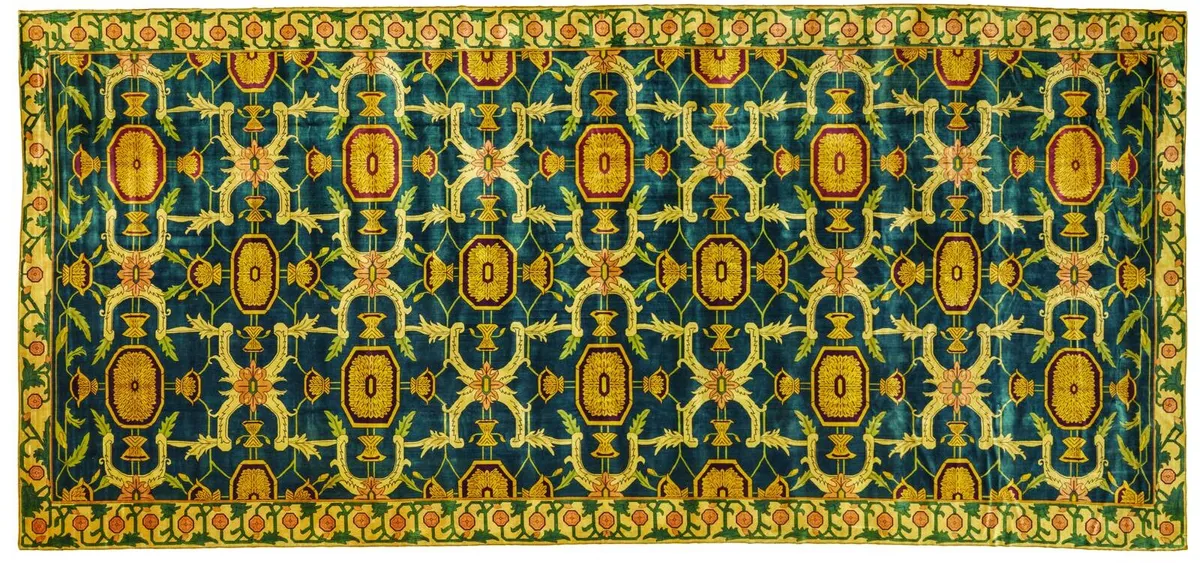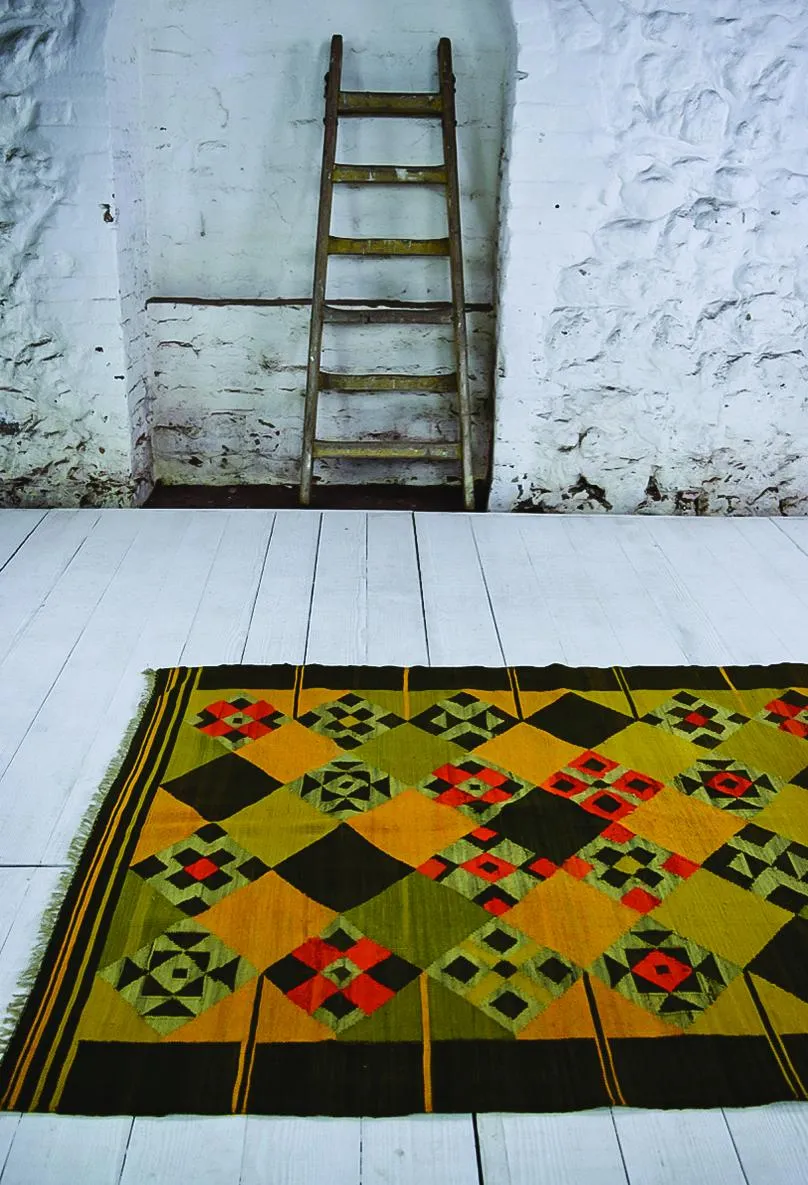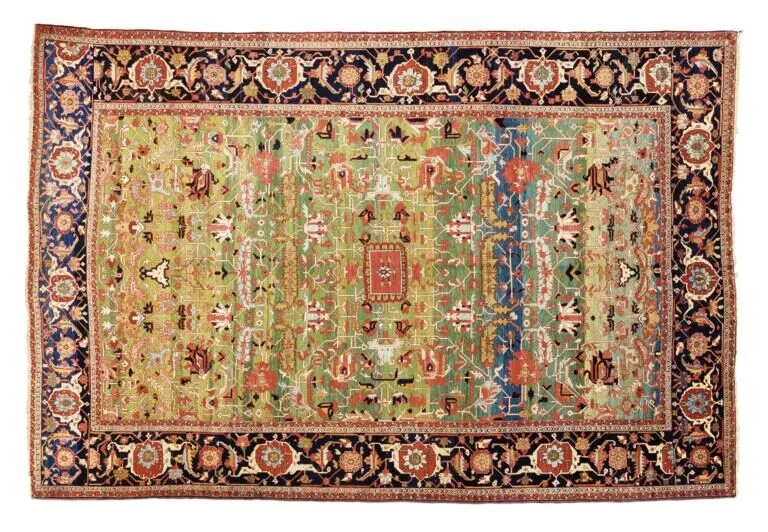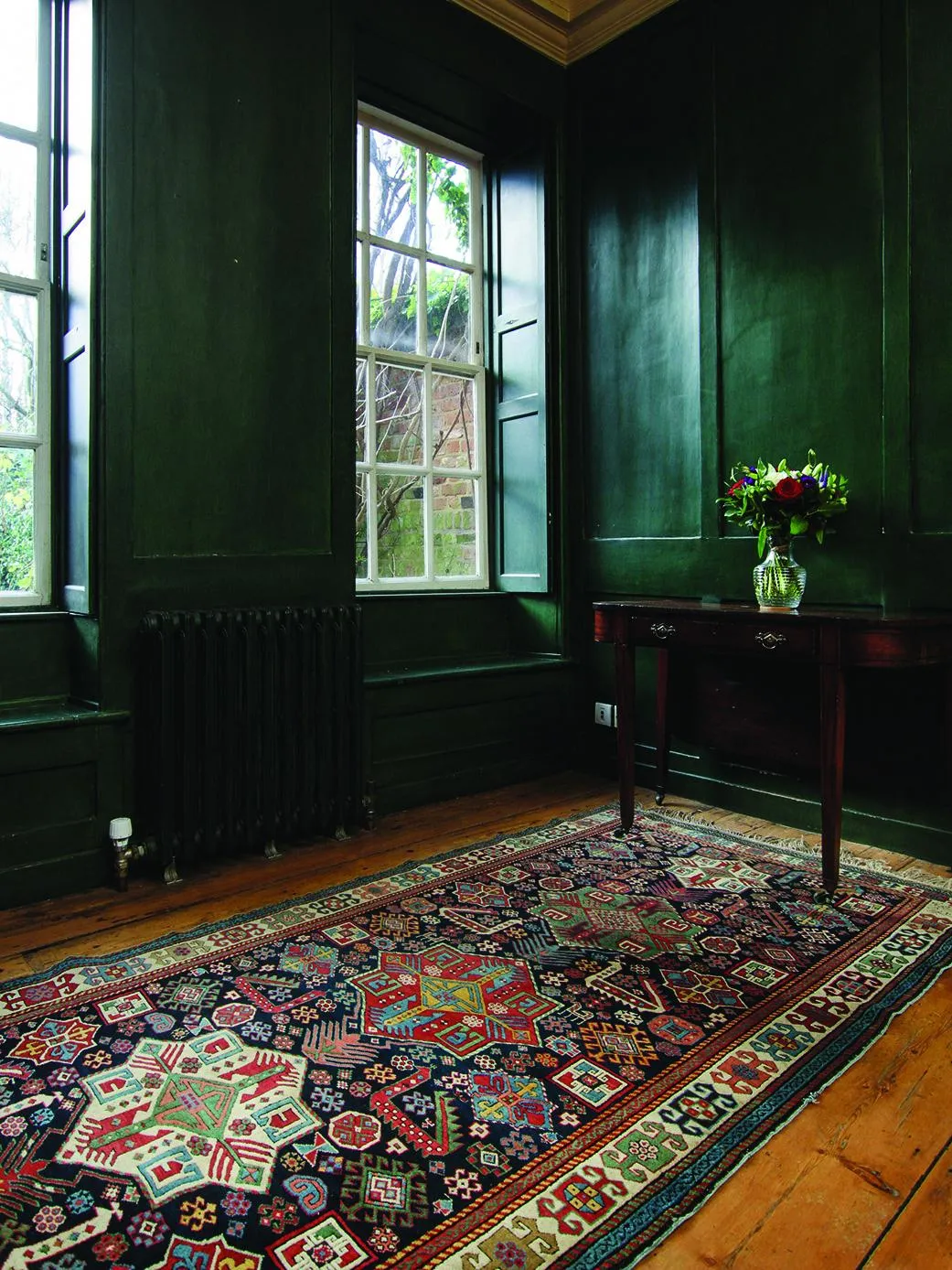When he was a 16-year-old schoolboy, James Cohen fell in love at first sight. The focus of his affections was an antique rug. ‘The moment I saw it, it took my breath away. I wanted it more than I’d wanted anything in my short life.’
James – now a dealer in antique textiles – is not alone in feeling passionately about rugs. ‘Carpet-making is one of the oldest artforms in existence,’ believes Louise Broadhurst, Head of Oriental Rugs & Carpets at the auction house Christie’s. ‘The same techniques have been used for millennia.’
Although the weavers’ names have been lost, experts develop an encyclopedic knowledge of the techniques, colours and patterns that help situate each example in a particular time and place. And there’s no hard and fast rule, but a carpet tends to be classed as a room-sized floor covering, whereas a rug is smaller, usually under nine feet.
‘Every single one tells a story,’ Louise continues. ‘But it has two sides. We learn a lot from the design and colours on the front, but the genetic fingerprint is on the back. That’s where we see how it’s really made – the materials used for the warp and weft, the quality and style of the knotting. All these things give clues about its true identity.’
You might also like our guide to buying Rya rugs
What are the different types of antique rugs?
Oriental rugs
Most antique rugs and carpets were made in the Oriental world, a vast area extending from North Africa, Turkey, the Caucasus, modern-day Iran, Central Asia and Afghanistan, to Pakistan, India and China. The carpet-making tradition spread along the so-called Silk Road, an ancient trade route stretching across Asia and into Europe.

Louise explains that there are two main types of Oriental rug or carpet. ‘Court or town carpets were woven with high-quality wool or silk, sometimes incorporating intricate metal threads, and made according to very precise patterns on large, fixed looms. They took years to produce and were commissioned to decorate royal palaces or used as ambassadorial gifts – it’s why we see numerous Turkish and Persian rugs reproduced in paintings of the English Tudor court and in the Old Dutch Masters in the west.’
Nomadic rugs
The second type are village or nomadic rugs, which were woven on much smaller looms, and the patterns were passed between the generations orally, so over time the designs evolved. ‘They were mainly made by and for women – as dowry pieces, for example,’ says Louise. ‘Evil eyes, amulets, hair combs, flowers, animals, or small male and female figures holding hands were sometimes woven into the subsidiary design – perhaps because mothers wanted to pass these good luck tokens to their daughters.’

Moroccan rugs
Katrien Vermeeren, founder and owner of London-based rug shop Emily’s House, loves the bold simplicity of tribal rugs, and Moroccan rugs in particular. ‘Their strong colours and geometric designs complement both antique and new furniture – other Oriental rugs can be too full-on for a contemporary setting,’ she says. ‘And the older rugs are one of a kind. They bring personality and individuality to a living space. They were made from the heart.’
Classical rugs
Louise distinguishes between two main markets at auction. Collectors of classical rugs and carpets are interested in rare survivors from the 15th to 18th centuries, made long before the advent of commercial production. One of the particularly attractive features of these carpets is what’s known as an ‘abrash’. Yarns were coloured using natural plant dyes, so no two batches turned out precisely the same, leading to tonal differences (or abrashes) within the same rug. ‘Modern weavers try, and fail, to reproduce the beauty of an abrash,’ says James Cohen. ‘But those weavers long ago knew how to handle the different tones artistically. That skill has been lost.’

Decorative rugs
The other market Louise describes is that of decorative rugs and carpets. Gradually, from the 1870s, as synthetic dyes started to be incorporated into carpet-making, production was scaled up and they became a major export. ‘Compared with the earlier pieces the quality started to decline,’ says Louise. ‘But there’s still night and day between good antique decorative rugs and most modern rugs.’
How much do antique rugs cost?
Given their rarity, large, intact classical carpets fetch enormous sums at auction. But if you don’t have tens of thousands of pounds to invest in a classical masterpiece, framed remnants offer an accessible alternative. ‘They tell a great story,’ enthuses Louise. ‘And the colours – even from the 15th and 16th centuries – are phenomenal.’
In the decorative market, prices can be unpredictable, because they’re at the whim of fashion and taste. Colour has a huge impact – currently pillar-box red and navy blue are totally unfashionable. ‘I look for the one per cent of rugs that have true sparkle and individuality,’ says James. ‘You don’t necessarily pay more for a bigger rug – they’re not sold strictly by the metre – but rugs with great colours and charisma are definitely more desirable.’

How to care for antique rugs
Antique rugs and carpets took thousands of hours to create, travelled the globe and survived for centuries. Should you really put them on the floor, and walk all over them? ‘Absolutely!’ laughs James. ‘That’s what they’re made for.’ Delicate old silk carpets need to be treated more carefully, he warns, but otherwise buyers should just take sensible precautions, as with other soft furnishings.
For more information, check out our guide on how to clean antique rugs
How to choose an antique rug
There’s one significant downside to buying an antique rug or carpet, cautions James. ‘You won’t find precisely the right size, design and colours straightaway. A rug definitely brings a room together, but it’s better to start planning with a rug, rather than use it as a finishing touch. Most people think of the floor last, which makes finding the right thing far more difficult.’
Whether an antique rug is your first thought or a final flourish, specialist fairs, like The London Antique Rug and Textile Art Fair (LARTA), are a good way to avoid endless traipsing around or online scrolling, as they bring lots of dealers and their stock into one place. However you decide to buy, perhaps like the love-struck 16-year-old James Cohen you’ll end up falling for your own magic carpet…
Where to buy antique rugs
The London Antique Rug and Textile Art Fair (LARTA) 25th to 30th January 2022 larta.net
Christie’s Dates to be confirmed christies.com
James Cohen Antique Carpets jamescohencarpets.com
Emily’s House emilyshouselondon.com Joshua Lumley Ltd joshualumley.com
